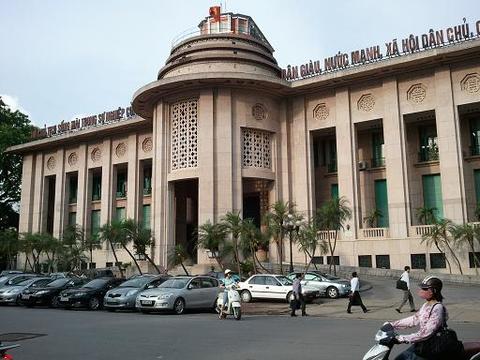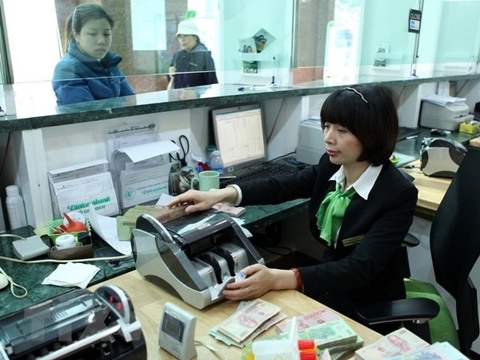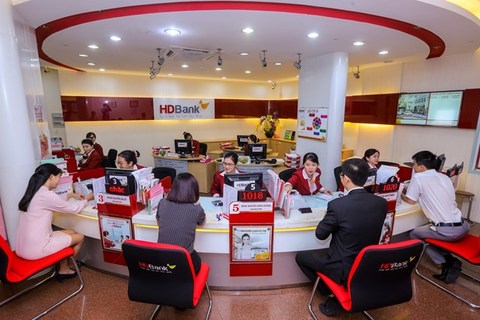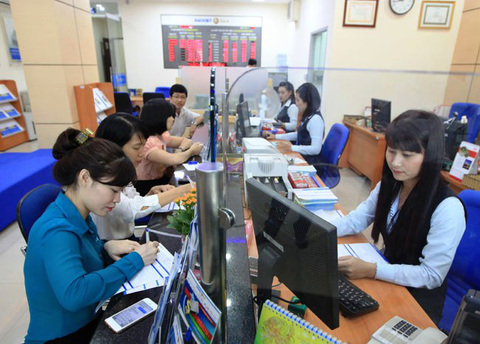Monetary easing in sight
Monetary easing in sight
Albeit not officially bringing down the key reference rates, the State Bank of Vietnam has made certain moves that signal monetary easing may run its course
In late July, the State Bank of Vietnam—or SBV, the central bank—suddenly lowered the treasury bill interest rate by 25 percentage points, down to 2.75% after more than four months keeping it stable at around 3%. Still, almost the entire volume of treasury bills on offer was absorbed by credit institutions, which indicated that the system liquidity remained ample. In the Interbank market, the lending rates among credit institutions tumbled across the board, with overnight interest rates falling from a high of over 4% in late June to only around 3% as currently, sometimes even down to 2.7% in the final days of July.
Meanwhile, the yields on the government bond market this July were 0.2-0.4 percentage point lower than in the second quarter, hitting the bottom in the past year. The winning rate however was up to 89% of the volume on offer, the highest since the beginning of the year, even though the volume issued in July was nearly equal to the total amount in the second quarter. Such developments on the primary market, along with the SBV’s cuts of interest rates on the open market, prompted the yields on the secondary market to sustain its downtrend for all terms.
Earlier, from the end of June, a series of joint stock commercial banks adjusted their credit growth targets for 2019 up by 3-4 percentage points. Despite the view that these credit institutions which have met the Basel 2 standards ahead of time should receive preferential treatment, it is undeniable many of them have reached or almost reached the limits on credit growth assigned for 2019. This called for relaxations by the central bank to meet the actual business situation at these credit institutions, and help promote the economic growth aiming to achieve the set targets.
Then, in early August, a series of banks announced they would cut the lending rates for the five preferred sectors with no need to resort to the SBV’s decision to lower the ceiling. Consequently, the interest rates for short-term Vietnam dong loans for agriculture and rural development; export; small and medium-d enterprises; supporting industries; and enterprises with technology applications will be brought down to 5.5% per year, one percentage point lower than current regulations.
It is apparent that although the key operating interest rates have not been reduced to the expected level, the recent downward trend of interest rates on several markets, together with the modified credit growth targets, should be attributed to, apart from the supply-demand factor, reasonable measures taken by the regulator, regarding the liquidity of the system or the orientation for operations of State-run banks, to bring about the overall spillover effect.
The reasons
Many positive factors supporting monetary easing can be cited. First, the general trend of central banks around the world today is to loosen monetary policy. In just two days of August 7 and 8, a series of central banks brought down their prime rates, including those of the two Southeast Asian countries Thailand and the Philippines. On the other side of the hemisphere, the U.S. Federal Reserve System (Fed) undid its monetary tightening policy with interest rate cuts announced during a meeting in late July.
In the context of the global economy displaying signs of deceleration and facing the risk of falling into recession under the adverse influence of the Sino-American trade war, the trend in which central banks relax their monetary policies is continuing. Like it or not, Vietnam must make appropriate decisions to ensure a competitive advantage for domestic enterprises and prevent the economy from stagnation due to external factors.
Furthermore, the China-U.S. trade war has led to the currency war, with many countries having voluntarily weakened their currencies or being about to do so. Meanwhile, as the dong has been so far kept stable, it is valued higher than other currencies, which inadvertently renders Vietnam’s exports less competitive. Therefore, the policy which extends low interest rates to borrowers who are exporters or importers is considered a suitable supporting form in the current context.
More importantly, profits of most credit institutions have been growing strongly and kept hitting new record highs, in which the gains from non-credit operations are increasingly large and account for a significant proportion. This is a necessary condition for these banks to have sufficient resources to share their benefits with the economy in general and the business community in particular, specifically by bringing down their lending rates in line with the regulator’s expectations.
Another advantage relates to the fact that the inflow of foreign investment into Vietnam has been constantly massive, which not only facilitates a stable exchange rate but also helps the SBV buy more foreign currencies to increase forex reserves, while pumping a large amount of the domestic currency into the economy for the sake of banks’ ample liquidity.
Considering the aforesaid developments, plus inflation and the well-controlled exchange rate, it would come as no surprise if in the coming time, the SBV decides to lower the key reference rates, such as the rediscount and refinancing rates which are currently 4.25% and 6.25% following the latest revision in July 2017. Such a move would bring about positive sentiment on the market while redefining the reference levels for interest rates in the economy.




















